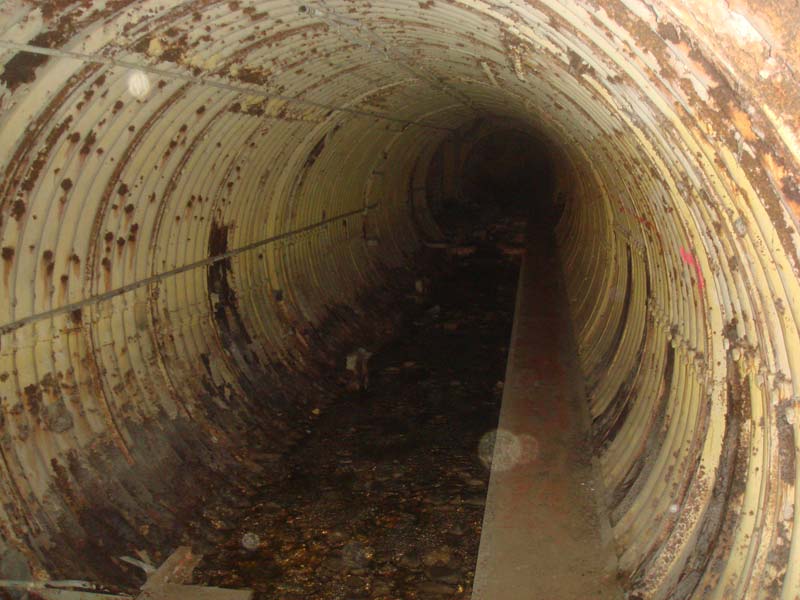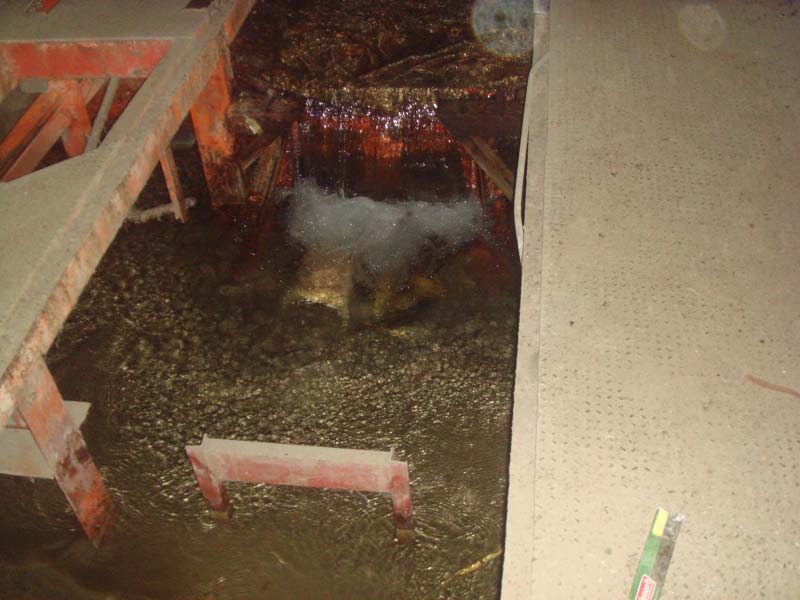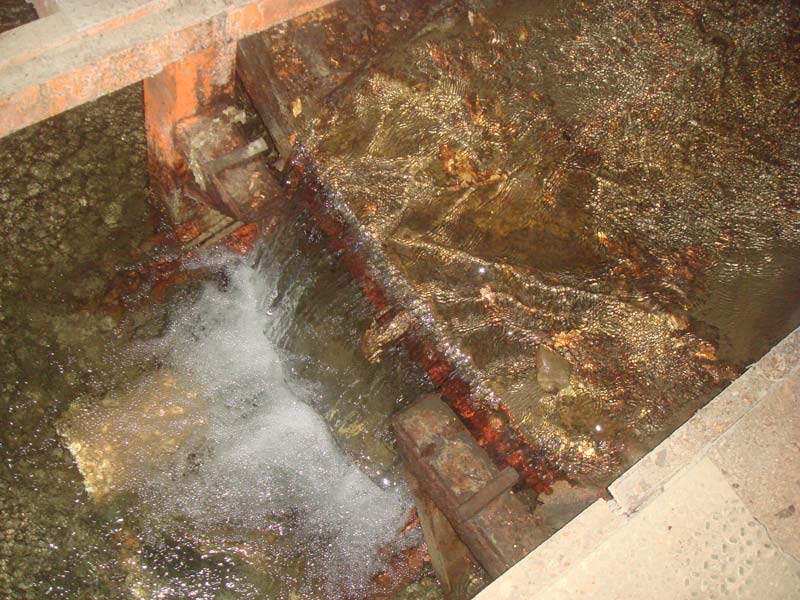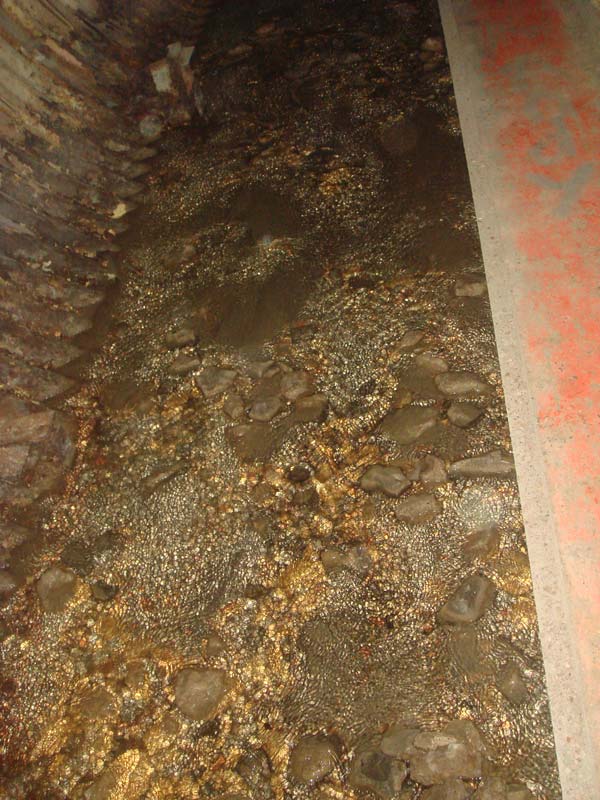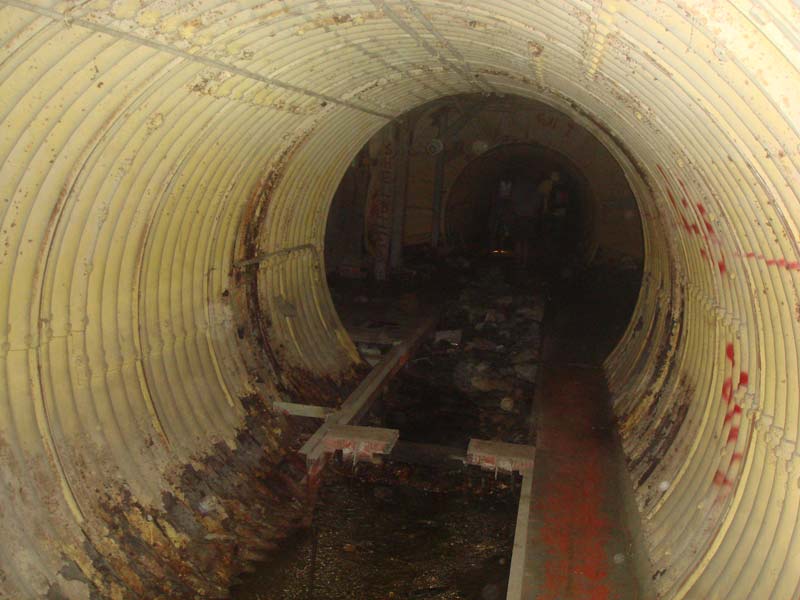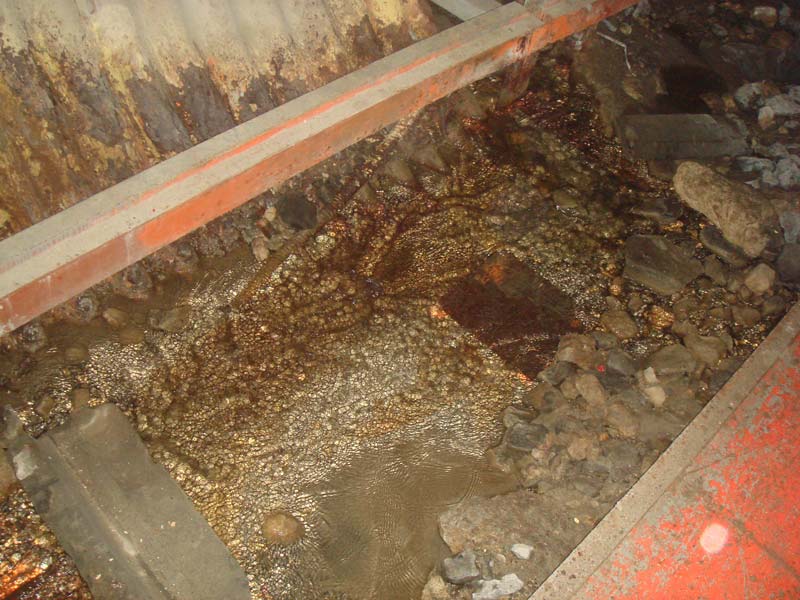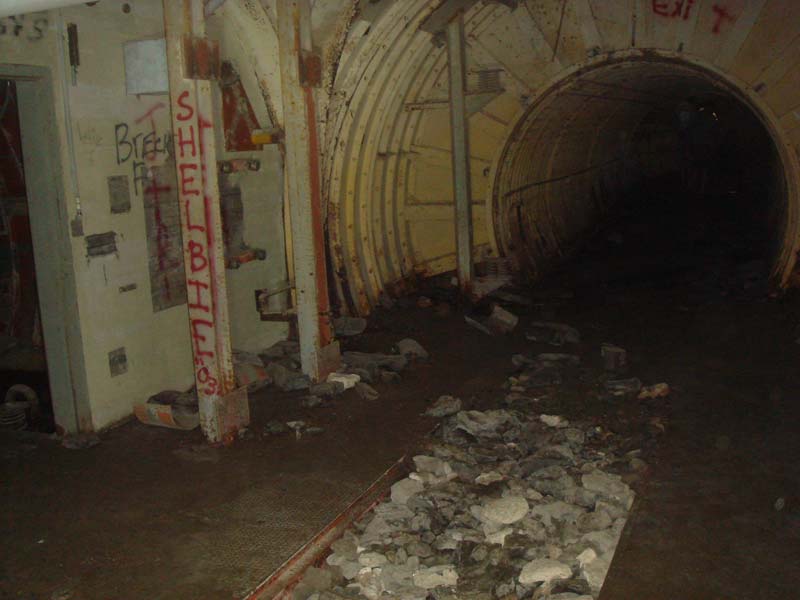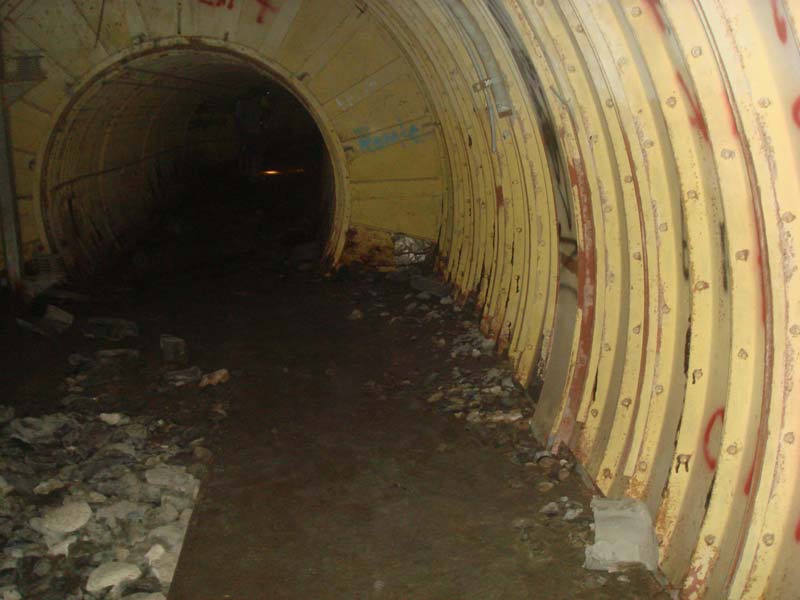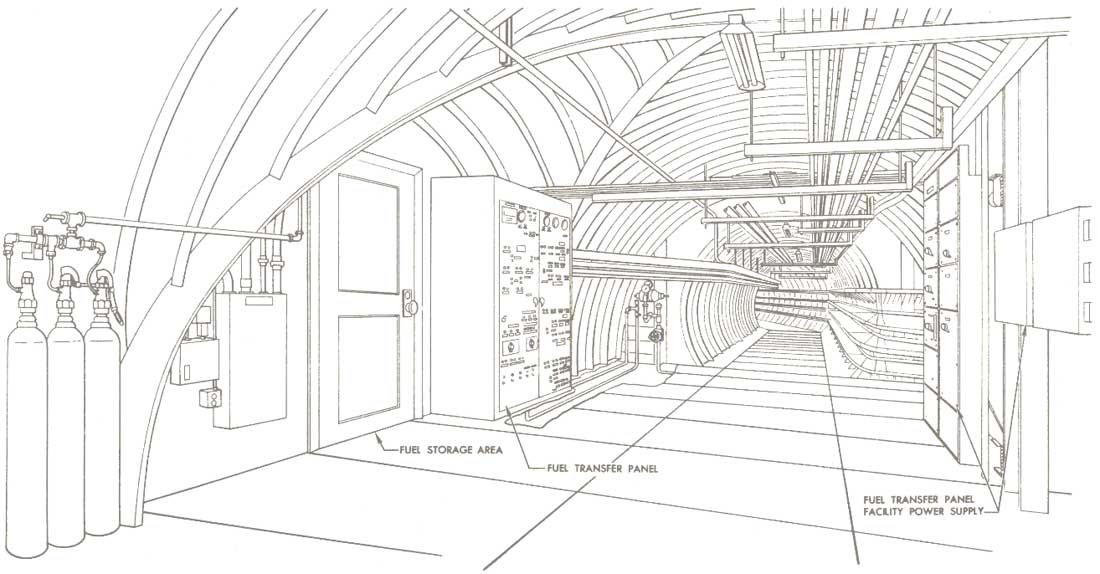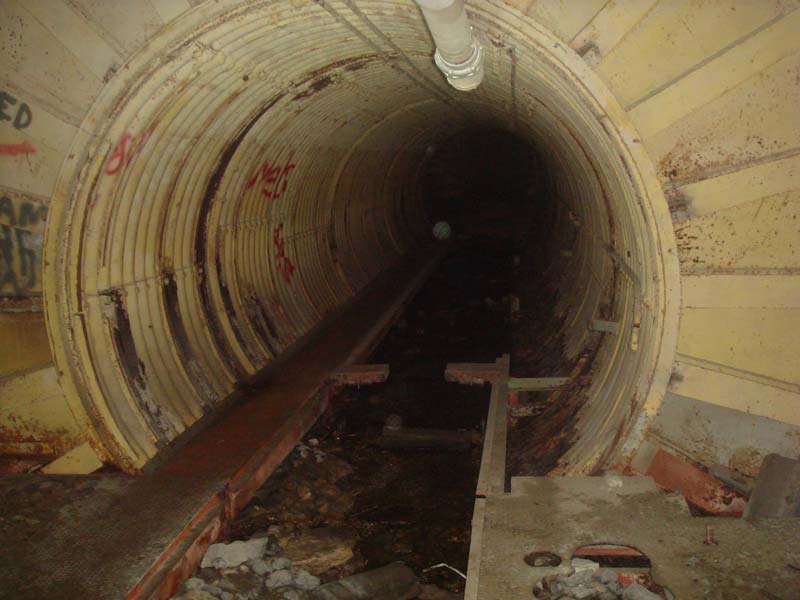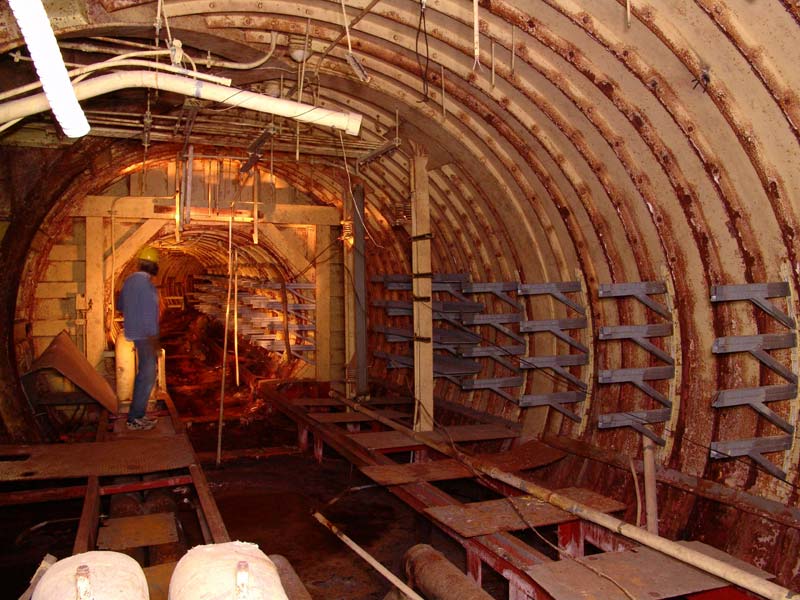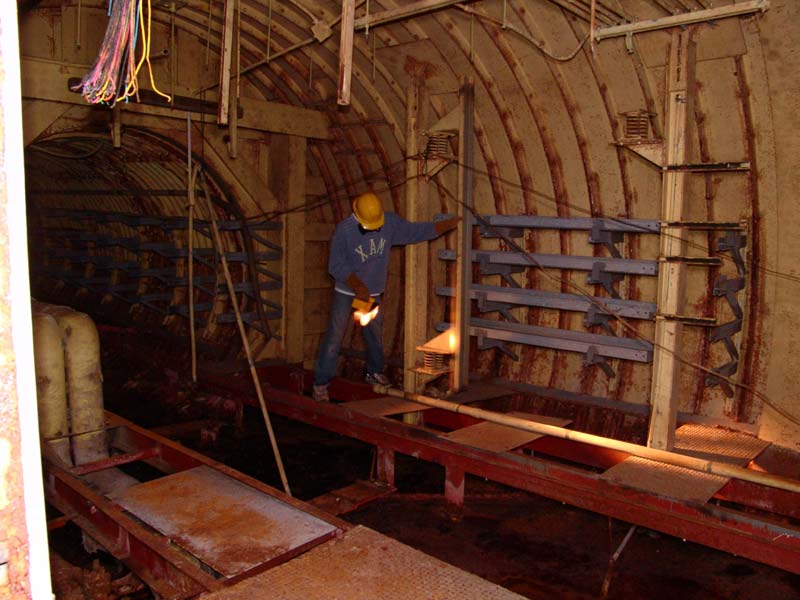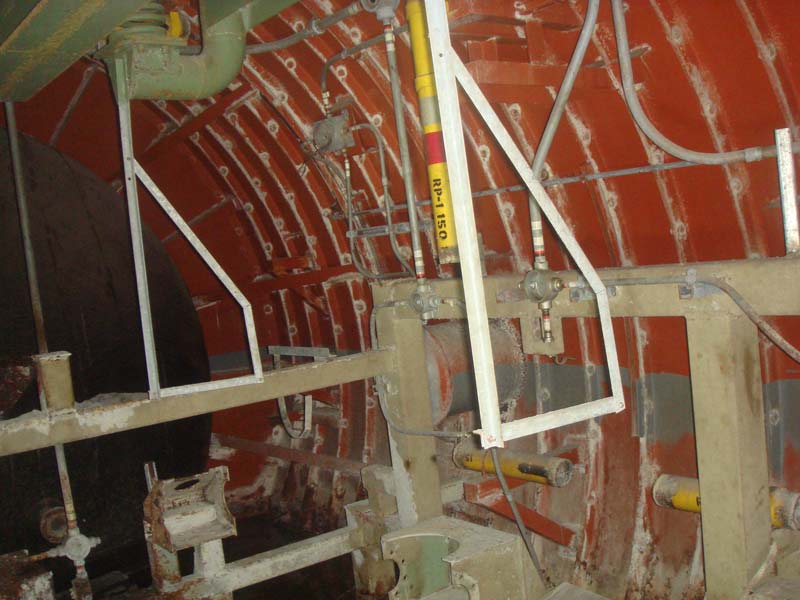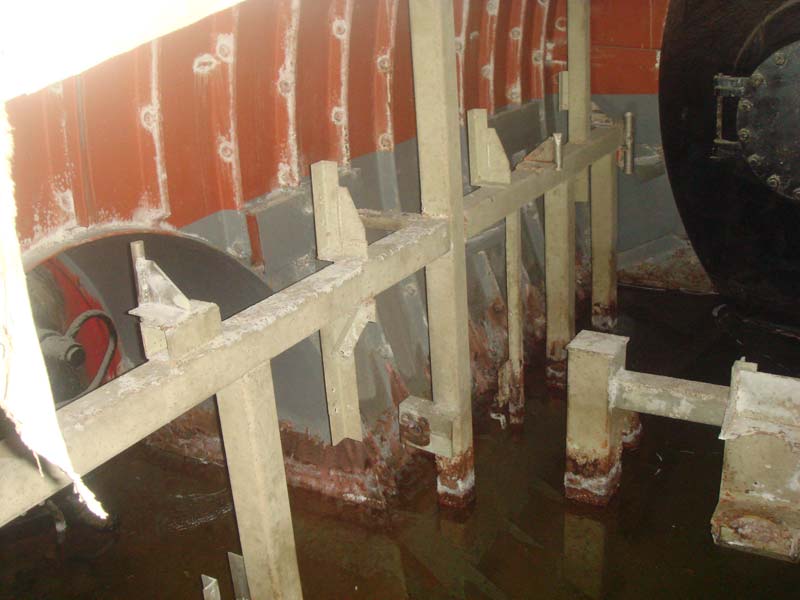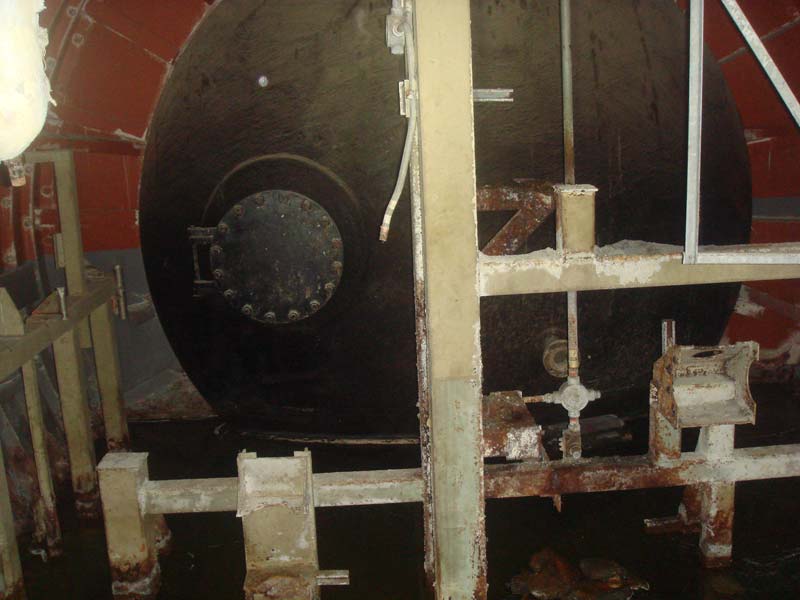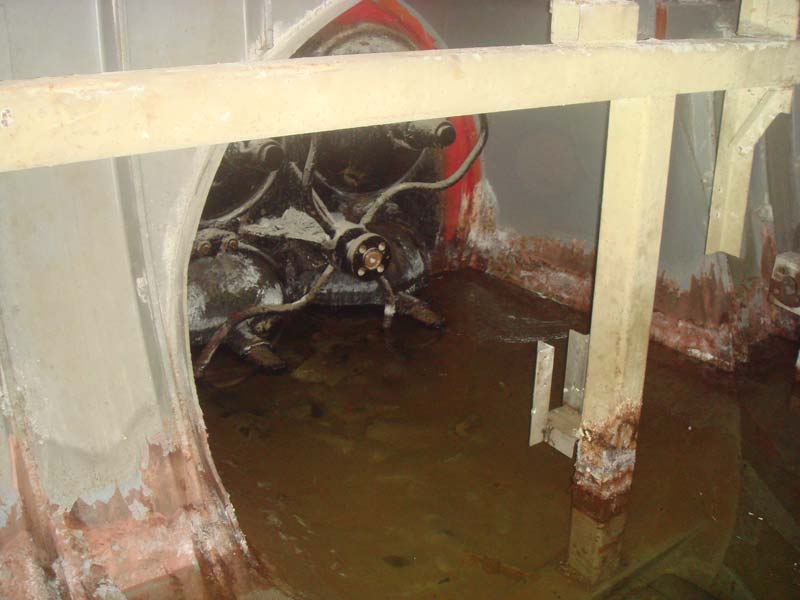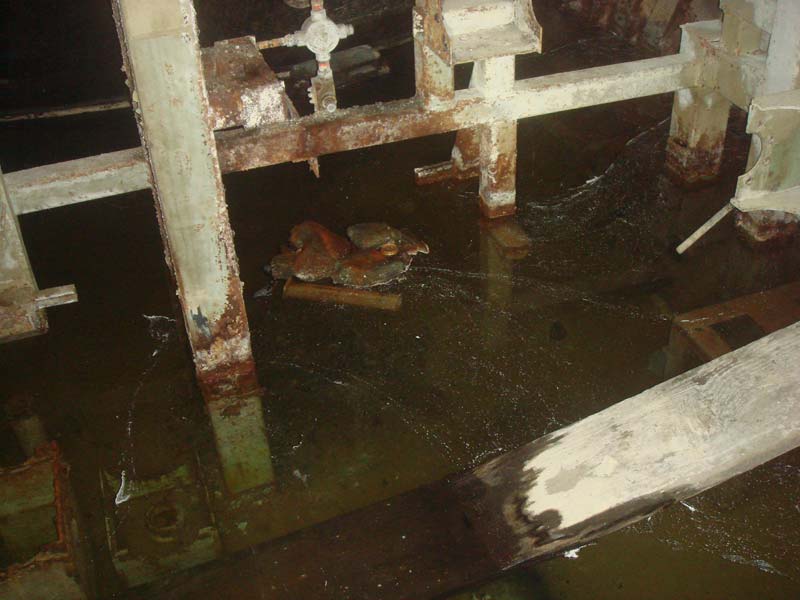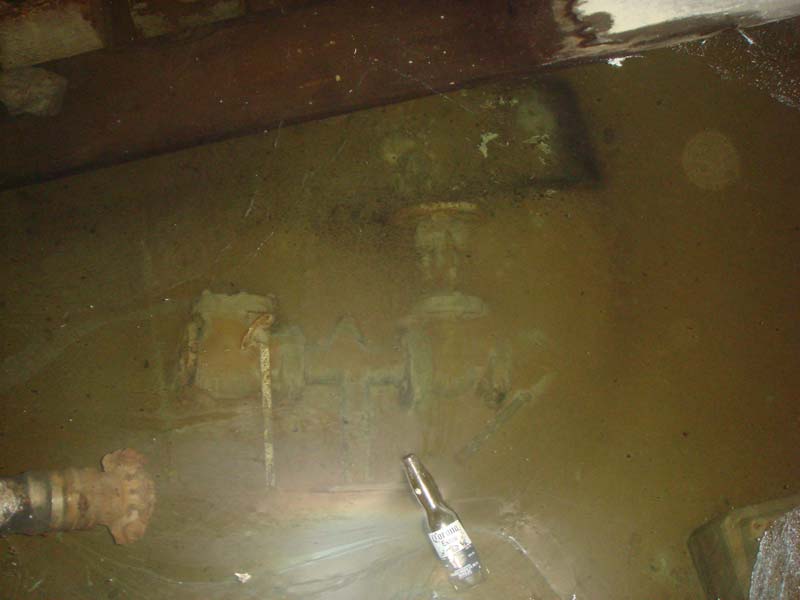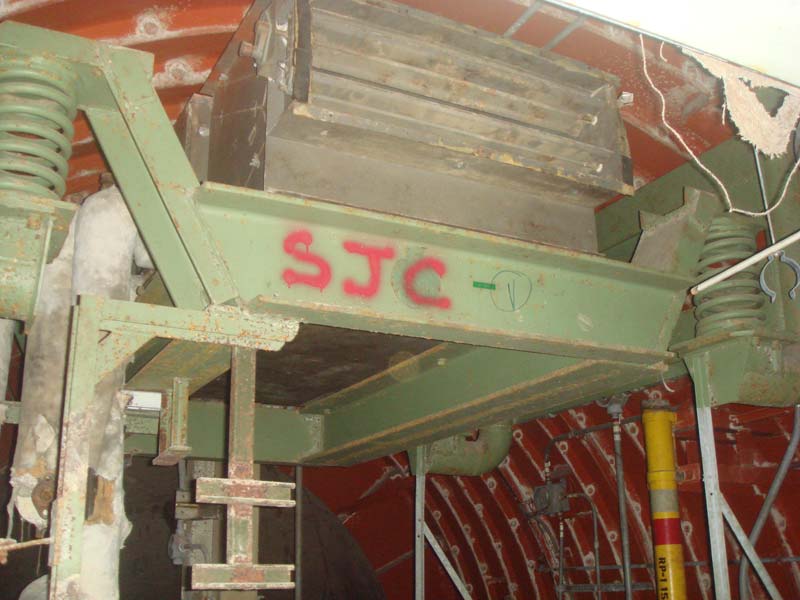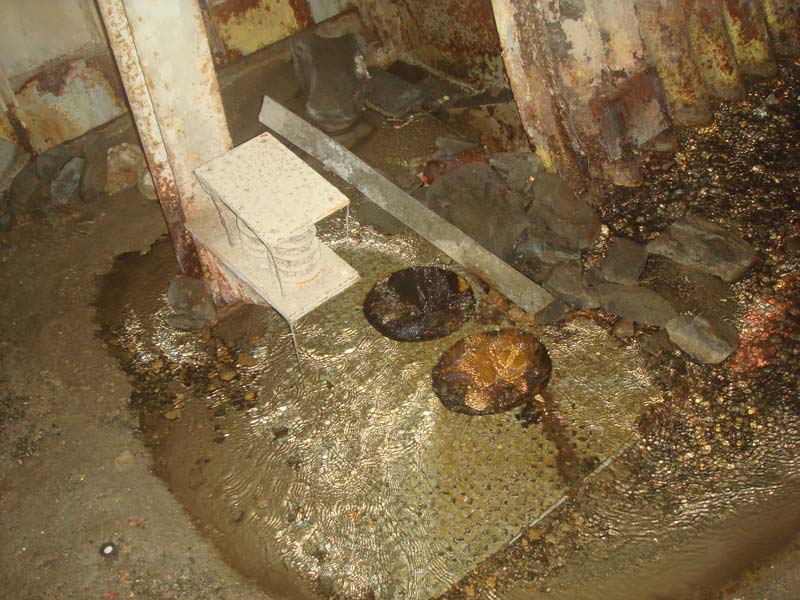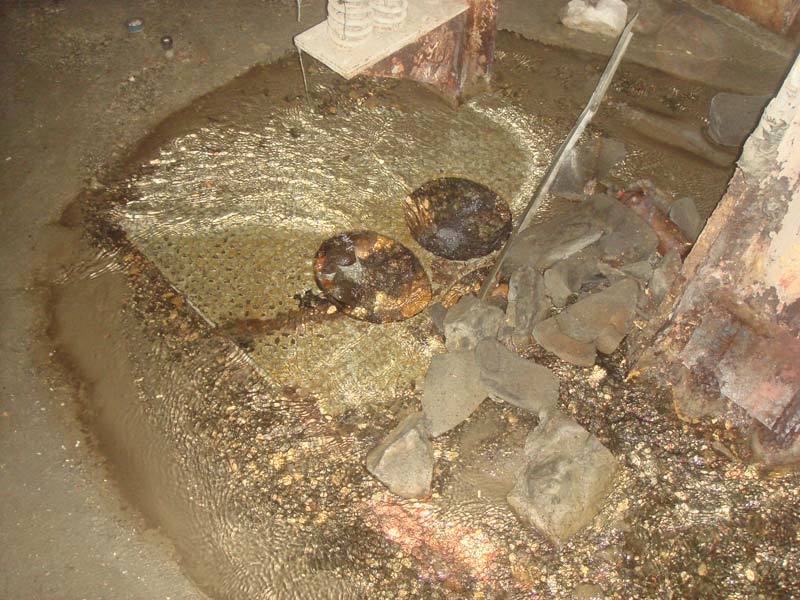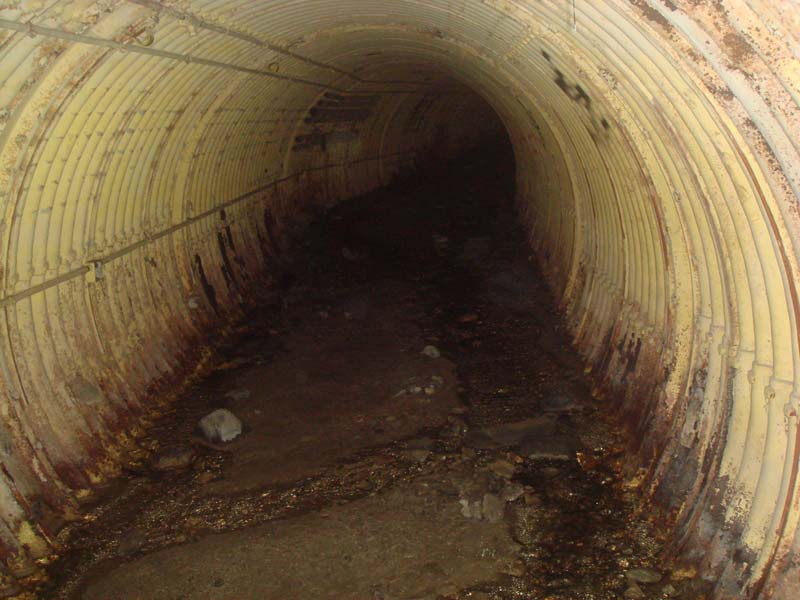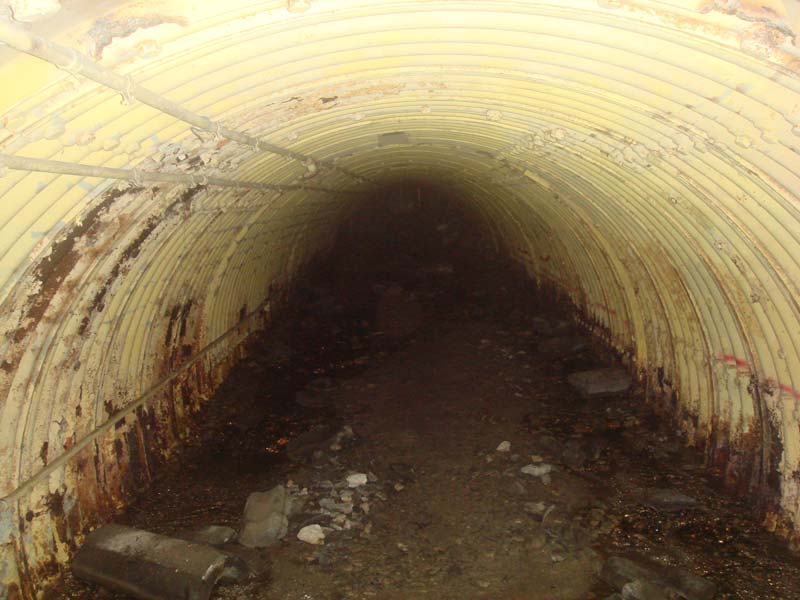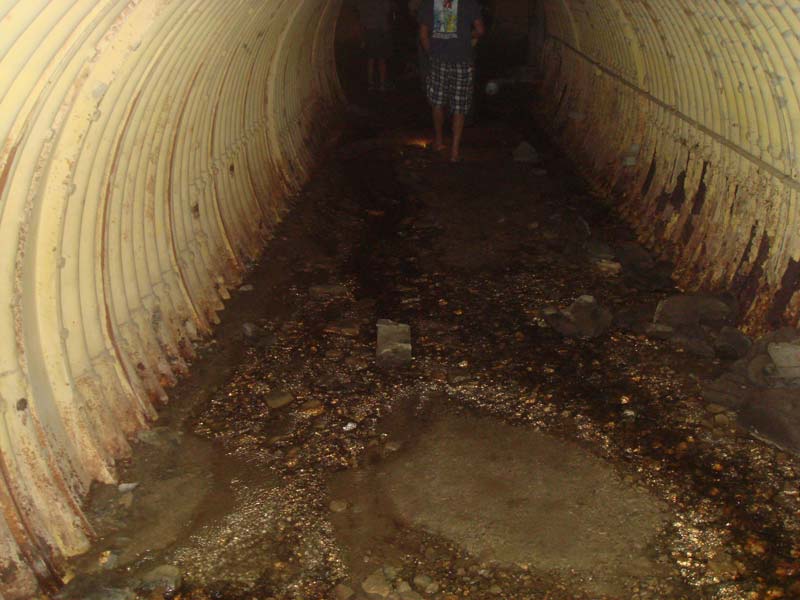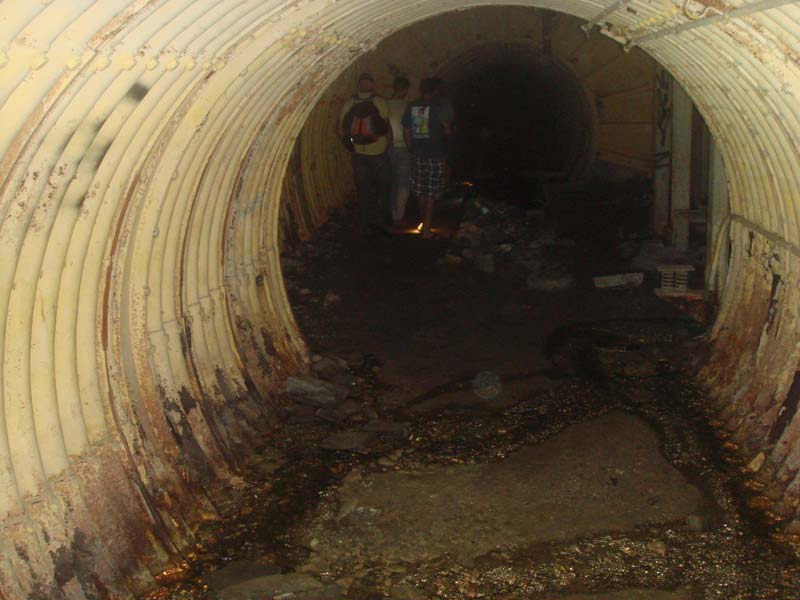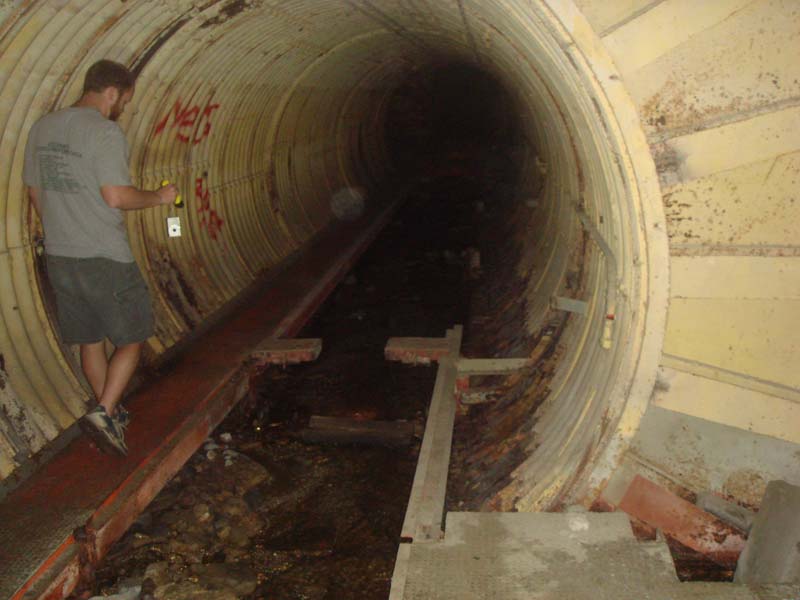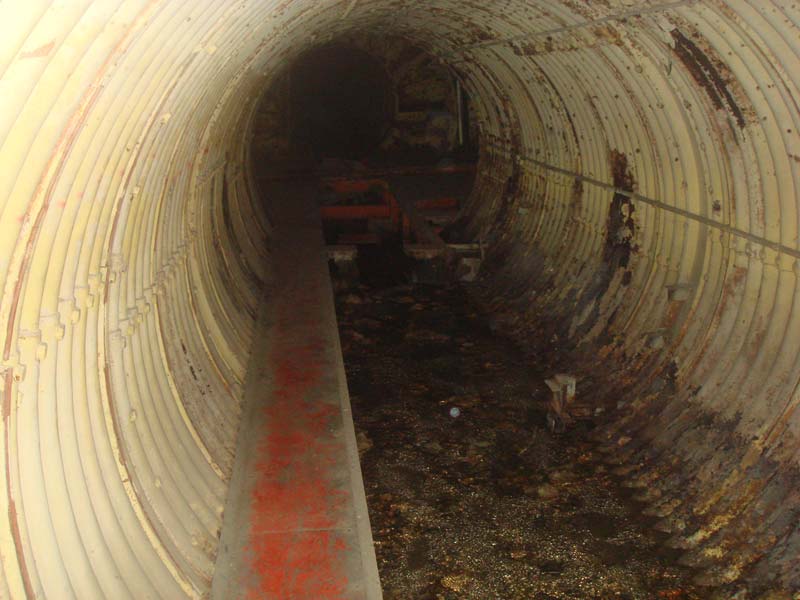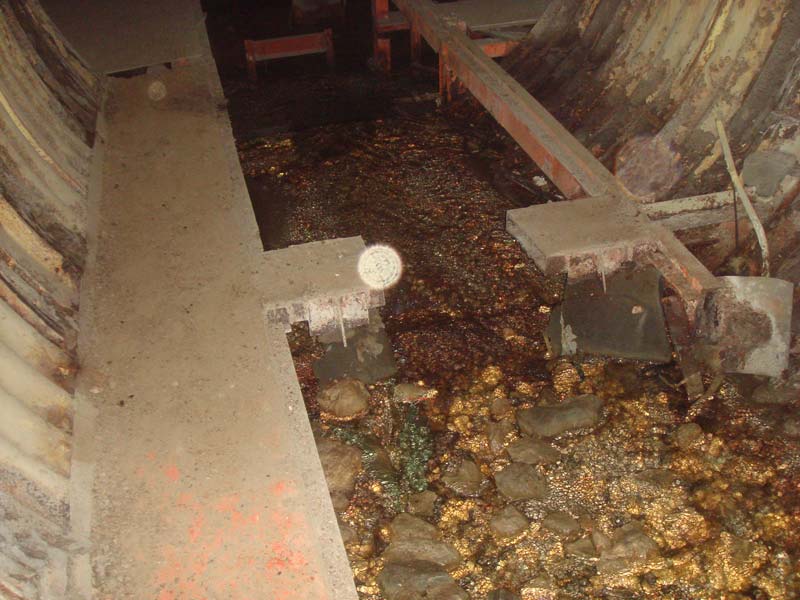
|
||||||||||||
|
This Adventure:
_____________
Part 04 _____________
|
||||||||||||
|
Plumbing Further... Back at the mouth of the launcher tunnel, water flowed undiminished from its raw and rusty throat as we entered single file into the echoing aqueduct and traversed the slender strip of residual flooring that hugged one wall. I was struck once again by the apparent clarity of the water, incongruous in such a dirty place as that site was. Well, I guess after a few years of being continuously flushed out, it would be rather clean so it all seemed to make sense. Now then, where is this water coming in from and what would I see at tunnel junction #12? Junction, What's Your Function? Tunnel
junction #12 is also known as the T.J.#12 (as I refer to it when I'm being lazy) was also where an array of nitrogen tanks were located, along with a fuel transfer panel, CO2 fire suppression system and ventilation system. The nitrogen tanks were used to pressurize the fuel tank and lines and aid in the transfer from tank to missile. Nitrogen also served to remove moisture from the fuel lines and tank, acting as a desiccant. There was an array of four nitrogen tanks adjacent to the RP-1 tank to do just that. Just outside the room containing the fuel and N2 tanks was a transfer panel which (surprise, surprise) was a transfer station for the fuel and controlled the valves between T.J.#12 and the missiles and had a nifty schematic of the fuel system showing the lines and valves connecting the system. Sadly, the fuel transfer panel is almost always gone, but you never know. Perhaps I would get to see one up close at this site? There was a fan to ventilate any fumes from the RP-1 and a vent shaft to the surface as well as a trio of carbon dioxide cylinders outside the tank area to extinguish a fire by displacing oxygen in the fuel storage area. For more information on the fuel terminal, visit the fuel terminal section where you'll find more photos, blueprints and other details. It was really good fortune that some of the floor remained at this site. I have tip-toed many times like a tight rope walker traversing the treacherous launcher tunnels at Lowry 724-C where there is just a thin rail to step on and dastardly pipe supports-- not unlike hurdles, that must be surmounted about every 6 feet along the way. It is definitely not a place for the uncoordinated and inattentive! This path at Larson seemed like a broad avenue stretching out before me and I strolled ahead confidently looking through my camera's narrow viewfinder without fear of sudden death from a nasty spill. The calming waters of Titan Creek moved gently over a bed of river stones which had been accumulating for what looked like years. I thought of torrential rains washing all that rock down into the tunnels and how it would get very interesting in a big hurry if the place suddenly started to fill with flood water. Imagine being flushed down the tunnels into the power house by a sudden tsunami of runoff from the fertile fields surrounding the complex! Where I grew up, flash floods were not uncommon. Could this more arid Washington climate I was in be prone to a drought-to-deluge sort of Summer weather pattern? Hmm. Best not to dwell on that I guess. No Transfers At This Terminal The tunnel between the main junction and T.J.#12 is fairly short and I could see in the widening passage that there didn't appear to be much left behind. Sure enough, the fuel transfer panel was entirely gone. Damn! Most people probably wouldn't get very excited about a steel cabinet with buttons, dials, gauges and switches all over it-- even if it was decades old. But for me, relics such as that were always exciting because I got to see what the old equipment looked like and how it was put together. Walter (my host, my ride, fellow missile nut and architect of this adventure) was also one to find great delight in old Cold War equipment, especially if it involved missiles. He shared my disappointment at the absence of accoutrements in the fuel terminal. Most of the flooring was intact in the junction except for a 3 foot wide gap in the middle where the under floor piping had been removed. Filling this gap was a lot of crushed pipe insulation frosted over with a chocolaty layer of wet dirt. Somewhere underneath it all, Titan Creek flowed silently, completely muffled by foam glass pipe insulation. Now I am known for being a bit "tangential" from time to time and I feel I must elaborate on something now as it turns up over and over in missile bases. That's right folks: pipe insulation. Most people are themselves insulated from the nomenclature and variegation of pipe insulation as well as its underlying necessity in both commercial and residential applications. Myself, I have unwittingly become thrust into a position where I have had to give a damn about the world of pipe insulation. I'll try to keep this brief. There are a number of different types of pipe insulation, but most fall into 3 basic types by the sort of material and their structure:
So, that said, the under floor space in this junction is completely filled in with discarded pipe insulation of the foam glass pipe persuasion. Foam glass is essentially just what it sounds like-- a pumice-like crunchy material made by frothing up molten silica into a light-weight covering with very good insulative properties. Most of the piping in the Lowry sites used fibrous insulation such as fiber glass and rock wool with asbestos plaster joints. Foam glass was used in the more demanding environments of the propellant terminal and LOX tunnel where liquid oxygen and other super-cooled products were present. Here at the Larson sites, it seems that foam glass was used far more extensively and as we explored the site, we would find it strewn about pretty much everywhere we went in large quantities. In fact, most of the tunnels were downright crunchy with the stuff. Later, this foam glass insulation would prove to be a major obstacle to our efforts to reach launcher #1. Terminal Condition Aside from some floor panels and lots of insulation, there was not much left of the fuel terminal. The beloved fuel transfer panel was gone, the power panel was gone, the fire suppression system was gone. The scrappers were very thorough in T.J.#12 it seems. On the walls, all they left were some hooks, and some wire... A bit disappointed by the bare walls of the tunnel junction, I turned my attention to the fuel storage area where the others were presently crowding in the doorway trying to get a better look at the somewhat constricted space beyond. Perhaps the storage area had been only lightly molested? Waiting my turn as they filed out the door, I could see a few features I'd not seen before. Stepping inside, what could be seen? The fuel storage area was not quite so clean! And though there was lots of stuff to be missed, I found myself standing there not feeling pissed. Sure the piping was gone, and even the door, but still there remained so very much more: There was a platform above I hadn't yet seen, and a whole bunch of crap below and between! Down on the floor was a bloody great mess, and something submerged, but what? I can't guess. There were some valves, and even some planks, and then yes of course there were also the tanks! Four tanks for nitrogen, one tank for fuel-- I'd seen them before, but I still think they're cool. But that wasn't all, there were other neat things-- like that overhead platform. It's mounted on springs! I saw to the right where a vent fan would sit; I saw beams and struts and all kinds of sh... well, um... Well, I saw a lot of stuff anyway. << D.S. mode off >> All silliness aside, in truth, there were a few things of interest in the fuel storage area, but nothing spectacular. I saw some features that I hadn't seen before up close, but it wasn't as though the place was in pristine condition. As always, the fuel storage area was flooded with about a foot of water that made really looking around impractical and most likely rather unpleasant without some good rubber boots close at hand. As it is such a small area, I doubt there is much else I would find even if I could traipse about the room with uncaring abandon. I got my pictures and stared into the foul-looking water hoping to spot something extraordinary half buried at the bottom in sediment, but no luck. I considered clambering about on the remaining framework of bars and beams but reminded myself that the clock was ticking away on our visit so I juggled my lights and cameras, got a bit of video and headed back out into the terminal where the others were waiting, as usual, for me to catch up.
Once back in the fuel terminal proper, I couldn't help but be drawn ahead by the tunnel beyond with its steady flow of deceptively-clear water. When I advanced on the continuing tunnel I saw another strange sight: As the water entered the larger tunnel junction, it immediately swirled out of sight down two large holes in the floor where it snuck unseen beneath our feet before emerging at the opposite end to continue down the tunnel to junction #10. Egad! I was standing in a giant bathtub! This odd sight only served to increase my already high-level feeling of bizarrity that had ramped steadily upward since I had begun to descend the entry portal staircase. I had a sense (quite justified) that things far stranger lay in wait for me on ahead in my exploration of Larson 568-C. The tunnel ahead was filled with dirt and rock and the further in I went, the lower the ceiling became. I stepped over the water, using "sand bars" of sediment to keep my feet dry as I advanced. On the Turning Away The tunnel takes a slight right turn (about 11 to 15 degrees) a short ways beyond the fuel terminal, and at about the point where it jogs to starboard, I found it necessary to stoop over like some weather-worn field hand to avoid the descending ceiling (a direct result of the ascending floor). I would endure this discomfort only a short while as I quickly found any further movement toward the launchers to be cut rather short by a welded steel barrier that sealed off the tunnel for anything larger than a bulimic rodent. Beyond this fortification I could see more water and tunnels-- none of which could be accessed from where I stood without the aid of an acetylene torch or perhaps a small quantity of explosives. Squinting into the darkness, I strained to see the space beyond the barrier. I hoped to hell it was accessible by some means! After a few moments of longing, I was happy to hear that the tunnel beyond was indeed accessible from the surface, and that I would in fact be able to venture further. The area beyond, being heavily flooded however, would require the use of a floatational device-- in our case, a kayak. I knew greater tantalizations lay ahead; this place was full of surprises and the launcher areas could doubtless be no different from the odd and even unsettling landscape I'd encountered thus far in this strange site. Still hunched over, I turned around, moving with great purpose toward the main tunnel junction. There were still 2 unexplored areas there: the antenna tunnel and terminal and the control center. Would I find a launch or facilities console at this site sitting in a pile of disused pipe clamps or insulation? It was too good to even hope for! We'd already spent too much time in these first areas and I knew we weren't going to make it back to the power house so I could visit the places I'd missed the first time around.
|
||||||||||||

